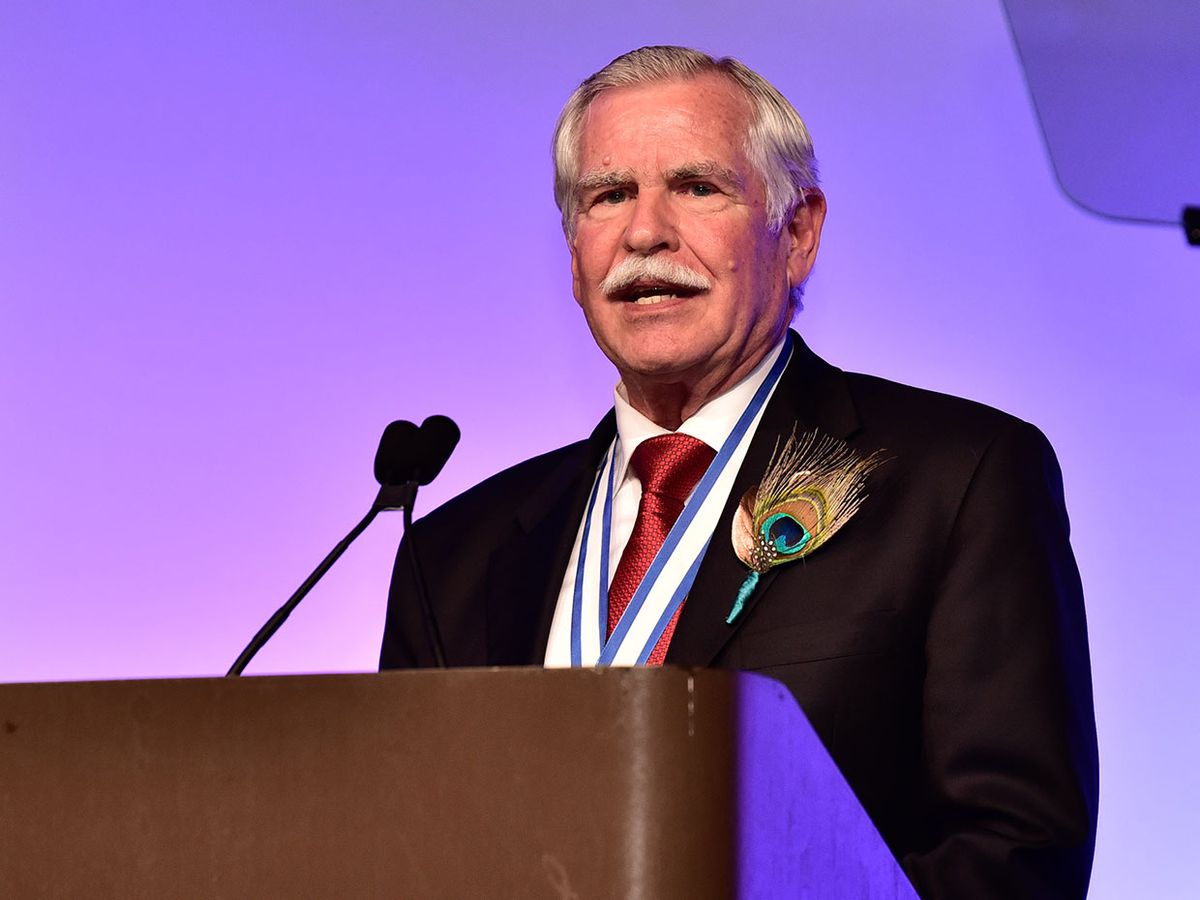THE INSTITUTERemember when electronic components tended to be big, slow, and unreliable? The technologies pioneered by several award recipients recognized at this year’s IEEE Honors Ceremony have brought us smaller consumer electronics, more accurate medical devices, and dependable wireless communication systems. They were celebrated on 17 May at the Marriott Marquis Marina hotel in San Diego.
IEEE Life Fellow Kurt Petersen received the organization’s highest award, the IEEE Medal of Honor, for his foundational work on microelectromechanical systems. MEMS technology involves merging miniature mechanical and electromechanical elements such as sensors and actuators onto a silicon substrate along with integrated circuits. The functionality of smartphones and human-machine-interface applications depend on MEMS.
“The MEMS industry has grown incredibly over the years thanks to the hard work of many researchers all over the world,” Petersen noted in his acceptance speech. “When I started working in MEMS in 1975, the market was $30 million. This year it’s going to be $20 billion.
“There are a lot of projects going on in research labs all over the world that haven’t been commercialized yet but will soon be,” he added. “I think the field still has a lot of momentum.”

IEEE Fellow Antun Domic also miniaturized an important technology: electronic design automation tools, which power many of today’s applications. EDA allows the creation of complex systems with computer software that aids in the design, verification, and testing processes and helps detect flaws in chips and circuit boards. As chief technical officer at Synopsys, in Mountain View, Calif., the IEEE Robert N. Noyce Medal recipient has developed tools that enabled the design of chips containing billions of gates.

IEEE Senior Member David Flynn and Member David Jaggar developed reduced instruction set computing (RISC) architecture that can be found in more than 100 billion microprocessor cores. The recipients of the IEEE/RSE James Clerk Maxwell Medal created the foundations that launched the system-on-chip market with microprocessors that power smartphones, portable computing devices, and Internet of Things applications. Based on the RISC process, their designs use less energy.
Bose Corp. has changed the way people listen to music at home and on the go. The company received the IEEE Corporate Innovation Award, which was founded in 1964 by IEEE Life Fellow Amar G. Bose when he was a professor at MIT. Based in Framingham, Mass., Bose pioneered technology that provided more realistic recorded music with a full range of sound—from speakers that were a fraction of the size of conventional ones. He died in 2013.

Accepting the award was the company’s vice president of research, Thomas Froeschle, an IEEE member. He said Bose was frustrated that he wasn’t applying his innovations at MIT to real products that actually reached people. “Reluctantly he reached the decision to form the company and in doing that, he tried to ensure it would continue to innovate over its whole existence,” Froeschle said. “We have strived to do that for 54 years.”

The work by IEEE Fellow David Ngar Ching Tse increased wireless data transmission’s channel capacity and decreased interference. The recipient of the IEEE Richard W. Hamming Medal developed an opportunistic scheduler, demonstrating that fading can be harnessed to increase network capacity, contrary to the conventional thinking at the time. His theory helped enable today’s wireless data boom. His work was part of Qualcomm’s Evolution–Data Optimized telecommunications standard for high-data-rate wireless systems and was incorporated into all 3G and 4G cellular systems. Tse further developed the technology by using multiple antennas to induce fading.
In his acceptance speech, he thanked Claude Shannon, who in 1948 laid out a grand vision for digital communication. “After 80 years the vision is fully realized,” Tse said, adding that Shannon’s work “set a tradition of research from first principles. In this era of fast-moving research, it’s now left to the next generation to uphold and expand upon that tradition.”
INNOVATIVE COMPANIES
Every day thousands of people living in remote areas of the world die because they can’t get access to medicine or a blood bank. To address the problem, the world’s first drone-delivery service, Zipline International, is distributing medical products—thus far in Ghana and Rwanda. For its efforts, the company received IEEE Spectrum’s Technology in Service of Society Award.
Founded in 2014 in Half Moon Bay, Calif., Zipline designs, builds, and operates small drone aircraft. The fixed-wing drones can fly 100 kilometers per hour and carry 1.8 kilograms of blood and medical supplies.

Zipline, which has two distribution centers in Rwanda, has made more than 10,000 deliveries since it opened its first center in 2016. Each facility services villages within an 80-kilometer range. It takes the aircraft about 30 minutes to deliver its payloads, and the drones can fly in all types of weather, day and night.
“Five years ago, when we started Zipline, we were told countless times that we were crazy,” said Keenan Wydrobek, the company’s cofounder and head of product engineering, who accepted the award. “We were told the governments we wanted to partner with weren’t going to be able to afford it. Our partners in the Rwandan and now Ghanaian government have moved barrier after barrier to make this a success. We now fly the equivalent of once around the equator a week delivering medical supplies, and we are just getting started.”
You can watch the entire ceremony on IEEE.tv.
The next IEEE Vision, Innovation, and Challenges Summit and Honors Ceremony will be held on 15 May 2020 at the JW Marriott Parq Vancouver hotel, in Vancouver.
Kathy Pretz is editor in chief for The Institute, which covers all aspects of IEEE, its members, and the technology they're involved in. She has a bachelor's degree in applied communication from Rider University, in Lawrenceville, N.J., and holds a master's degree in corporate and public communication from Monmouth University, in West Long Branch, N.J.



